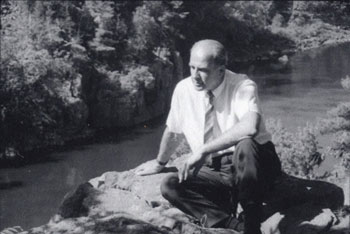Ever wonder how Earth Day got started?
The height of hippie and flower-child culture in the US, 1970 brought the death of Jimi Hendrix, the last Beatles album, and Simon & Garfunkel’s "Bridge Over Troubled Water". Protest was the order of the day, but saving the planet was not the cause. War raged in Vietnam, and students nationwide increasingly opposed it.
At the time, Americans were slurping leaded gas through massive V8 sedans [not so different than today]. Industry belched out smoke and sludge with little fear of legal consequences or bad press. Air pollution was commonly accepted as the smell of prosperity.
After witnessing the ravages of the 1969 massive oil spill in Santa Barbara, California, Wisconsin Senator Gaylord Nelson had an idea. Inspired by the anti-war movement, he realized that if he could infuse that energy with an emerging public consciousness about air and water pollution, it would force environmental protection onto the national political agenda.
He announced the idea for a "national teach-in on the environment" to the national media; persuaded Pete McCloskey, a conservation-minded Republican Congressman, to serve as his co-chair; and recruited Denis Hayes as national coordinator. Hayes built a national staff of 85 to promote events across the land.
As a result, on April 22, 20 million Americans took to the streets, parks, and auditoriums to demonstrate for a healthy, sustainable environment in massive coast-to-coast rallies. Thousands of colleges and universities organized protests against the deterioration of the environment. Groups that had been fighting against oil spills, polluting factories and power plants, raw sewage, toxic dumps, pesticides, freeways, the loss of wilderness, and the extinction of wildlife suddenly realized they shared common values.
Earth Day 1970 achieved a rare political alignment, enlisting support from Republicans and Democrats, rich and poor, city slickers and farmers, tycoons and labor leaders. The first Earth Day led to the creation of the United States Environmental Protection Agency and the passage of the Clean Air, Clean Water, and Endangered Species Acts. "It was a gamble," Gaylord recalled, "but it worked."
Each year, Earth Day marks the anniversary of the
birth of the modern environmental movement on April 22.
It’s been describes as "one of the most remarkable happenings in the history of democracy."
Read some recent reflections from Denis Hayes about renewable energy over these decades. "It was like Project Apollo or the Manhattan Project, each year, Congress doubled our budget." He now heads the Bullitt Foundation, which is celebrating Earth Day at its grand opening of its Living Challenge building.
Senator Gaylord Nelson: (1916 – 2005)

Nelson served 10 years as a Wisconsin Senator, served two terms as the state’s governor and followed that with 18 years in the US Senate.
Among his many achievements, his legislation:
- Preserved the 2,000-mile Appalachian Trail
- Mandated fuel efficiency standards in automobiles
- Controlled strip mining
- Banned the use of DDT and Agent Orange
- Created the St. Croix Wild and Scenic Riverway and the Apostle Islands National Lakeshore
He also served as Counselor of The Wilderness Society for 14 years after leaving the Senate, working to protect
America’s national forests and national parks.
++++
Thanks to Starfish Junction for this background on Nelson.
Read more about Earth Day and find events near you:

